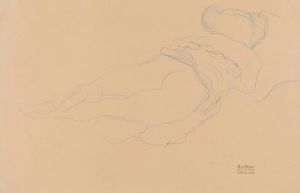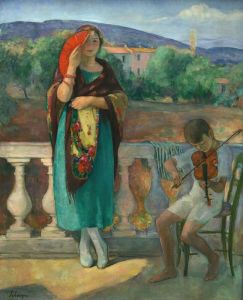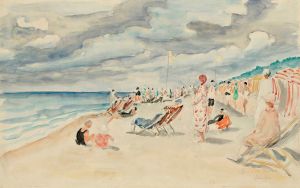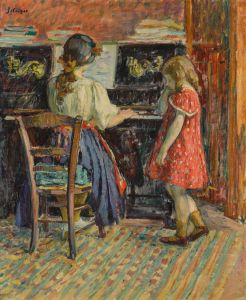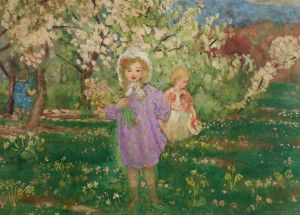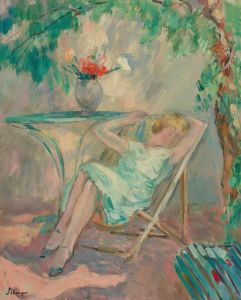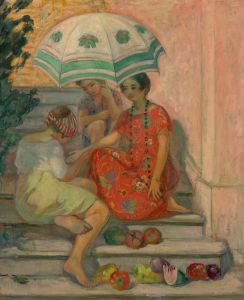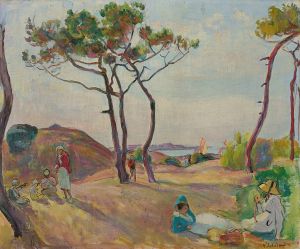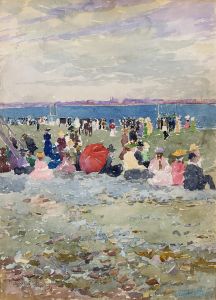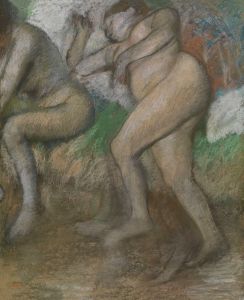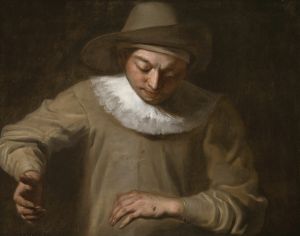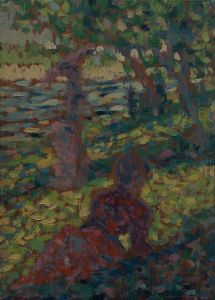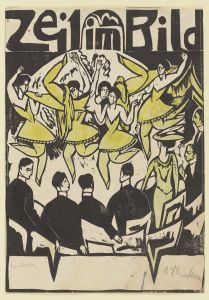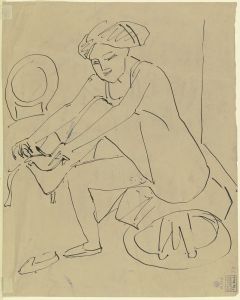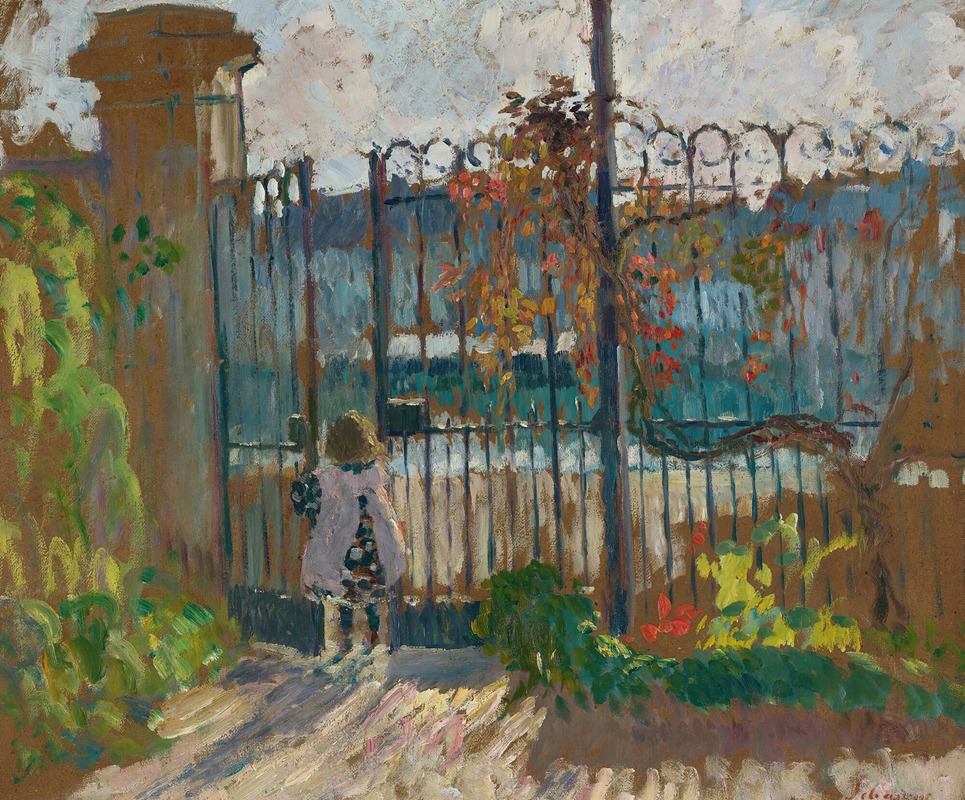
Lagny, Nono À La Grille Du Jardin
A hand-painted replica of Henri Lebasque’s masterpiece Lagny, Nono À La Grille Du Jardin, meticulously crafted by professional artists to capture the true essence of the original. Each piece is created with museum-quality canvas and rare mineral pigments, carefully painted by experienced artists with delicate brushstrokes and rich, layered colors to perfectly recreate the texture of the original artwork. Unlike machine-printed reproductions, this hand-painted version brings the painting to life, infused with the artist’s emotions and skill in every stroke. Whether for personal collection or home decoration, it instantly elevates the artistic atmosphere of any space.
Henri Lebasque, a notable French post-impressionist painter, created the artwork "Lagny, Nono À La Grille Du Jardin." Lebasque was born on September 25, 1865, in Champigné, France, and he became known for his vibrant use of color and light, often depicting intimate domestic scenes and landscapes. His work is characterized by a gentle, joyful atmosphere, which is evident in this particular painting.
"Lagny, Nono À La Grille Du Jardin" exemplifies Lebasque's ability to capture the essence of everyday life with warmth and sensitivity. The painting portrays a serene garden scene, where a young child, presumably named Nono, is depicted standing by a garden gate. The setting is likely in Lagny, a commune in the Seine-et-Marne department in the Île-de-France region, which may have been a place of significance or inspiration for Lebasque.
Lebasque's style was influenced by his association with other artists of the time, including Pierre Bonnard and Édouard Vuillard, who were part of the Nabis group. This influence is reflected in his use of color and composition, which often emphasizes harmony and balance. In "Lagny, Nono À La Grille Du Jardin," Lebasque employs a soft palette and fluid brushstrokes, creating a sense of tranquility and intimacy. The light filtering through the trees and the gentle depiction of the child contribute to the overall peaceful ambiance of the scene.
Throughout his career, Lebasque was associated with the Fauvist movement, although his work is generally considered more restrained compared to the bold colors and forms typical of Fauvism. His approach was more aligned with the post-impressionist tradition, focusing on the depiction of light and the emotional resonance of color. This painting is a testament to his skill in capturing the subtleties of light and shadow, as well as his ability to convey emotion through his subjects.
Lebasque's work gained recognition during his lifetime, and he exhibited in several prestigious venues, including the Salon des Indépendants and the Salon d'Automne. His paintings were well-received for their warmth and charm, and he became known as "the painter of joy and light." "Lagny, Nono À La Grille Du Jardin" is a fine example of his oeuvre, showcasing his talent for creating inviting and intimate scenes.
Today, Henri Lebasque's paintings are held in high regard and can be found in numerous public and private collections worldwide. His work continues to be celebrated for its contribution to the post-impressionist movement and its enduring appeal. "Lagny, Nono À La Grille Du Jardin" remains a cherished piece, reflecting Lebasque's unique ability to capture the beauty of everyday moments with grace and sensitivity.





